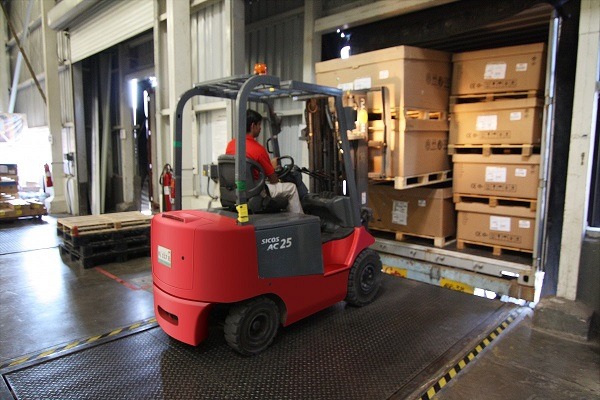In 1917, The Clark Material holding company introduced the Tructractor―now more commonly known as the first forklift ever. As the years rolled by, numerous companies developed newer kinds of forklifts, each coming with its own unique perks and applications. Forklifts have become a mainstay in almost every single warehouse operation around the world. There are 7 different classes of forklifts that are manufactured at present, and each of these requires specialized training to operate. There is no dearth of training programs in the States; you can consider enrolling in a remote forklift training course. It’s a two-day workshop developed by experienced trainers to ensure that your forklift operator stands abreast with the most recent operational and safety guidelines for the particular class of forklift they operate. Bear in mind that the kind of training you need depends on the kind of forklift you operate. And identifying the class of your forklift is the first step towards making your warehouse work smoothly. For more information on scissor lift hire check out Allstar Access Hire.
Class 1: Electric Motor Rider Trucks
This forklift has a wide range of applications. It’s ideal for loading and unloading trailers and moving pallets around the warehouse. You can spot it in all kinds of industries ranging from retail to factory warehousing. This forklift, as its name suggests, is powered by an electric battery. It is extremely quiet and emits no discharge, making it perfect for indoor use. EMR trucks come equipped with cushion tires designed for indoor surfaces, although they can also be fitted with pneumatic tires for outdoor use. Additionally, many companies offer forklift repair and rental services, which can be especially helpful for businesses that are looking for a more cost-effective solution.
Class 2: Electric Motor Narrow Aisle Trucks
Some warehouses can involve cramped corridors with very little space between aisles. In such conditions, a Class 2 forklift is an intelligent choice to make. These machines are designed with maneuverability, efficiency, and speed in mind. They’re perfect for moving pallets around in narrow areas. Buying a narrow-aisle truck also means that you get more space for your warehouse storage. These things can reach high places to stack items, helping utilize the available space as elegantly as possible. Some narrow aisle trucks also include additional components like swing masts and side loaders.
Class 3: Electric Motor Hand Trucks or Hand/Rider trucks
This forklift is highly compact and entirely hand-controlled. The operator controls the lift through a steering tiller. All controls for the truck are mounted at the top, making it very easy to operate. A hand truck is perfect for unloading deliveries from trailers and moving through tight spaces. Some Class 3 forklifts come with walk-behind options, making them extremely useful in transporting pallets to loading areas and stacking racks. Best use them for short distances and small warehouses.
Class 4: Internal Combustion Engine Trucks – Cushion Tire
A Class 4 forklift is powered by a forklift engine that run on fuels such as gasoline or CNG. They are designed specifically for indoor use and can be used to move pallets around in a warehouse. Although electric forklifts are preferred in indoor spaces, internal combustion engine forklifts come in handy in warehouses that can’t accommodate a charging station or a workload that is as tight on schedule as it is in space. The cushion tires on these machines make them ideal for places with low clearance and smooth indoor surfaces.
Class 5: Internal Combustion Engine Trucks – Pneumatic Tire
Like Class 4 Trucks, Class 5 trucks also run on gasoline or CNG. They have pneumatic tires, making it possible to use them in both indoor and outdoor spaces. Due to their versatility, these types of trucks are most commonly found in your average warehouse. They can handle a wide variety of loads, right from small single pallets to 40- foot containers.
Class 6: Electric and Internal Combustion Engine Tractors
A Class 6 truck can feature both electric and internal combustion engines. However, unlike traditional forklifts, these are used for towing loads rather than lifting. Spot them plowing to work at airports and assembly lines, pulling heavy cargo and luggage from point A to B.
Class 7: Rough Terrain Forklift Trucks
This is the most heavy-duty class of forklifts. They aren’t designed for internal warehouse spaces; you’ll do best putting them to work at construction sites or lumber yards. Almost all of them are powered by diesel engines and have large floatation-type tires. They’re ideal for use in rugged terrain, where you need to lift heavy material to high elevations. Some Class 7 forklifts also come equipped with a telescoping mast to expand their reach further. Owing to the skill and precision required to handle these beasts, you need to ensure your operators are well-trained and experienced.

